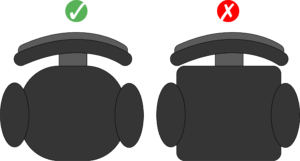Section 3
CHAIRS
The chair must fit the user, as well as suit the tasks to be performed.
One style of chair may not suit every user.
The chair should provide support and stability to the user and allow movement through multiple positions.
What Makes a Chair Ergonomic?
A chair is only “ergonomic” if the user can adjust it to fit their own personal dimensions.
In order to do this, the following parts of a chair need to be adjustable:
![]()
Seat pan
(height and depth)
![]()
Backrest
(height and angle)
![]()
Lumbar Support
(height and depth)
![]()
Armrests
(height, width and ability to rotate)
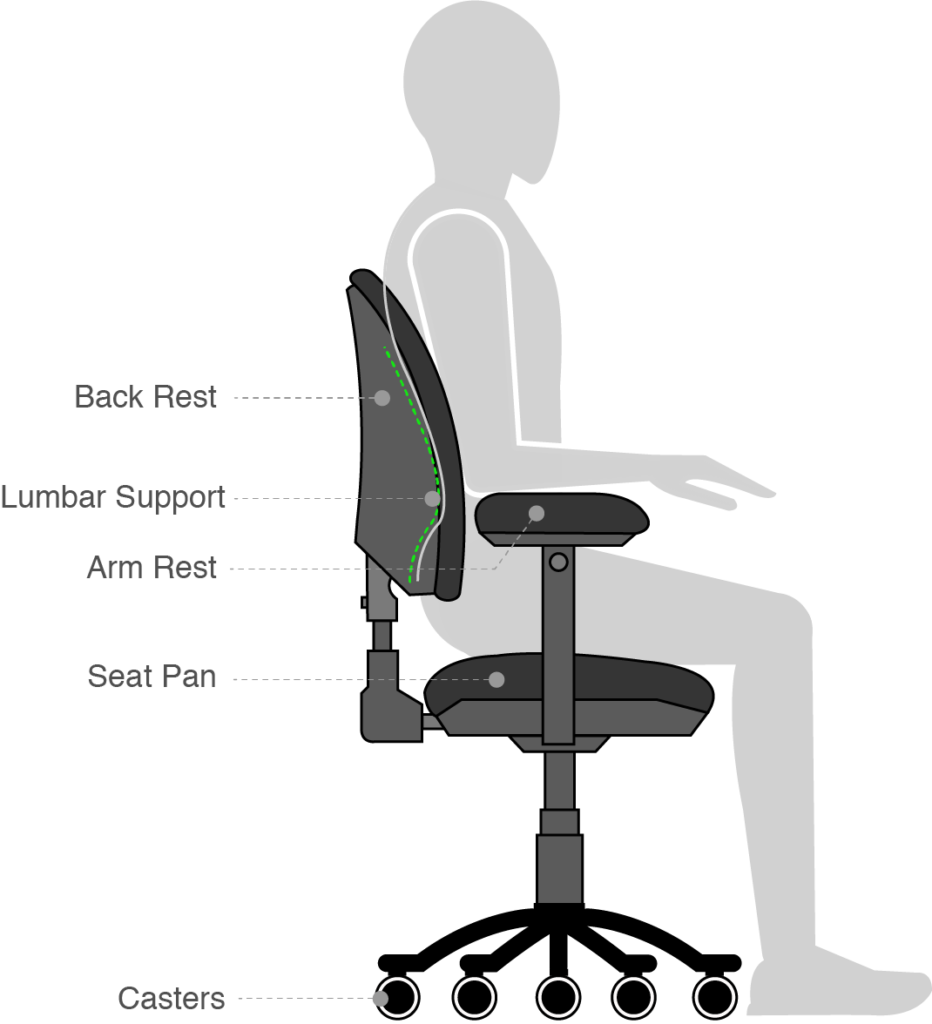
Seated Neutral Posture in an Adjustable Chair
It is important that the user understands the proper positioning of these features to allow for optimal support and to maintain neutral sitting postures.
Each of these features is discussed in detail below:
Seat Pan Depth
Having a seat pan that is the correct size is an essential feature.
If the seat is too deep, it will create a pressure point on the back of the legs. This will not only reduce blood flow and nerve supply but also cause the user to slide forward, reducing the effectiveness of the lumbar support.
The simplest way to determine if the seat pan is too deep is to perform the “fist” test.
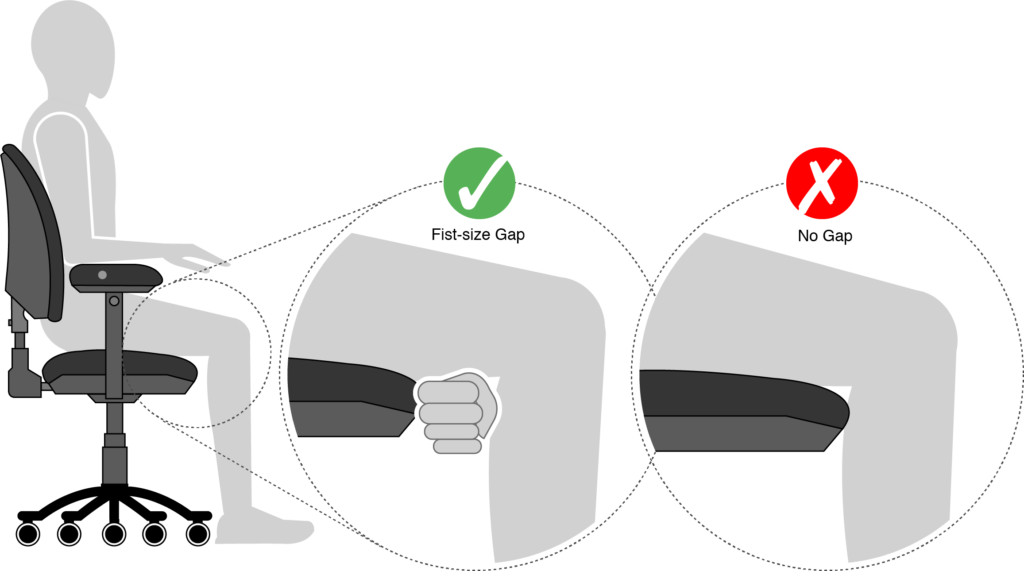
The “Fist” Test
Sitting properly in the chair the user should be able to place their fist (maximum) or two fingers (minimum) between the front edge of the seat pan and the back of their legs.
If this cannot be achieved, the seat pan depth is either too deep (less than two fingers), or too short (more than fist):
• If the chair has seat pan depth adjustability, make the required adjustments.
• If the seat pan cannot be adjusted, and is too large for the user, then the seat pan or chair must be replaced with one that is the correct size for the user.
Seat Pan Width
Ensure that the correct seat pan size is provided to the user based on their physical size and dimensions.
Chairs can be provided in various sizes to accommodate different users.
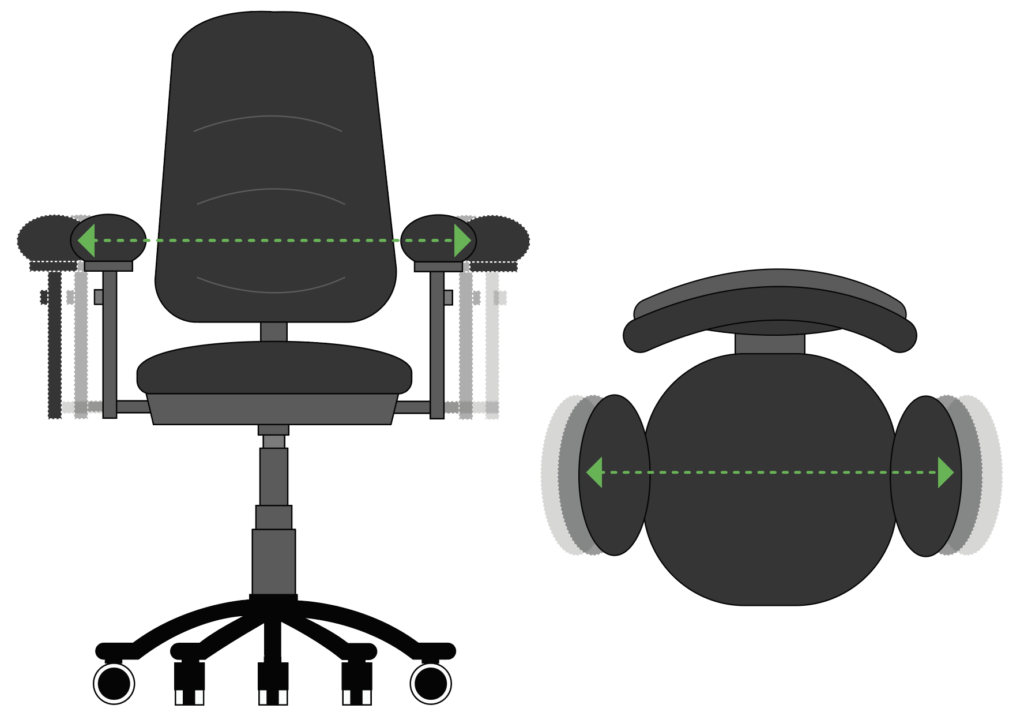
Adjustable Armrests
The width can be further accommodated by making changes to the armrests (rotated or adjusted in width from the base).
If armrests have width adjustability, position them to fit the user.
(See Armrests below).
Seat Height
The seat height is dependent on the physical size and dimensions of the user.
The user’s working height (on the desk, height adjustable workstation, or on a height adjustable keyboard tray) also dictates the height at which the seat is positioned.
The seat height should allow the user to:
• Sit with their feet resting comfortably on the floor or a footrest.
• Work with their upper extremities in neutral postures.
• Make easy adjustments to allow for postural variation and different footwear.
There are three simple ways to ensure your seat is at the correct height:
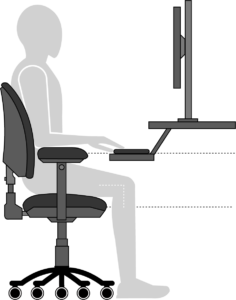
1. Keyboard on keyboard tray
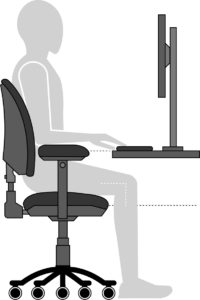
2. Keyboard on workstation (no footrest)
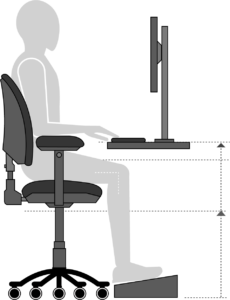
3. Keyboard on workstation utilizing footrest
Seat Angle
The seat pan angle should:
• Be adjustable and independent of the backrest adjustments.
• Allow the user to maintain support of their feet on the floor or footrest.
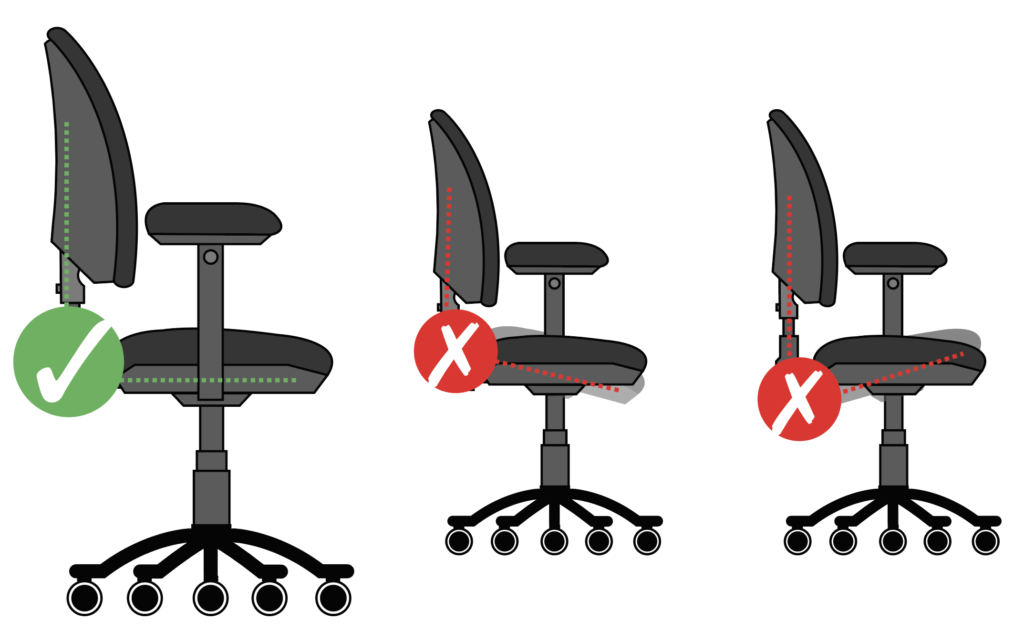
If your seat cannot be lowered or raised to the proper height, then the cylinder may be replaced with one that allows for the proper adjustments.
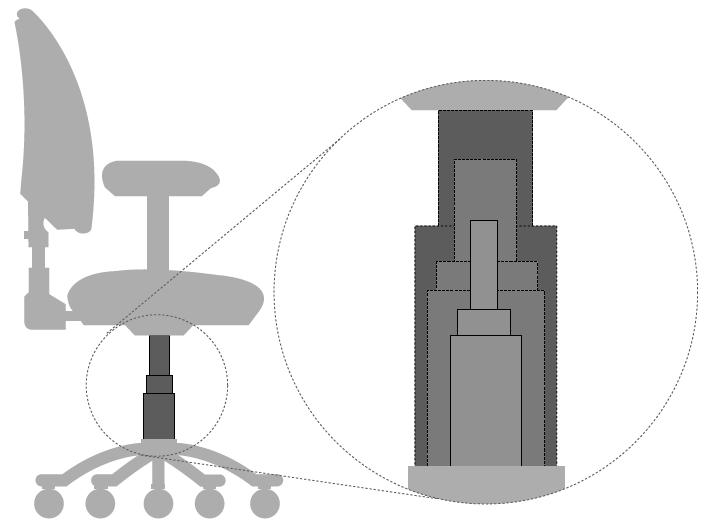
Adjustable Cylinder
Backrest Height
The backrest height should be:
• High enough to support the users back, shoulders, and neck.
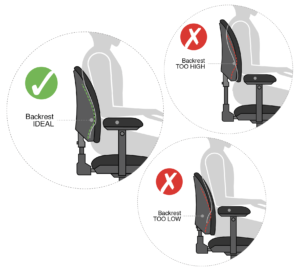
Lumbar Support
The lumbar support helps maintain the natural curvature of the spine.
The lumbar support should:
• Be height adjustable in order to accommodate the user.
• Be shaped to accommodate the user.
• Not cause any localized pressure points.
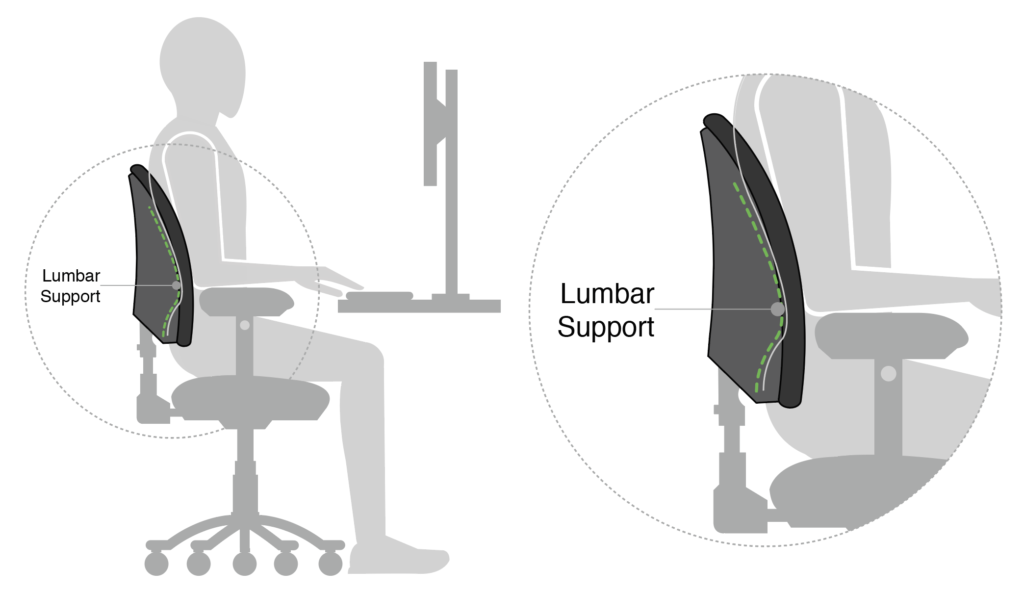
Backrest Width
The backrest should:
• Be wide enough to provide adequate support to the user’s back.
• Not cause any localized pressure points.
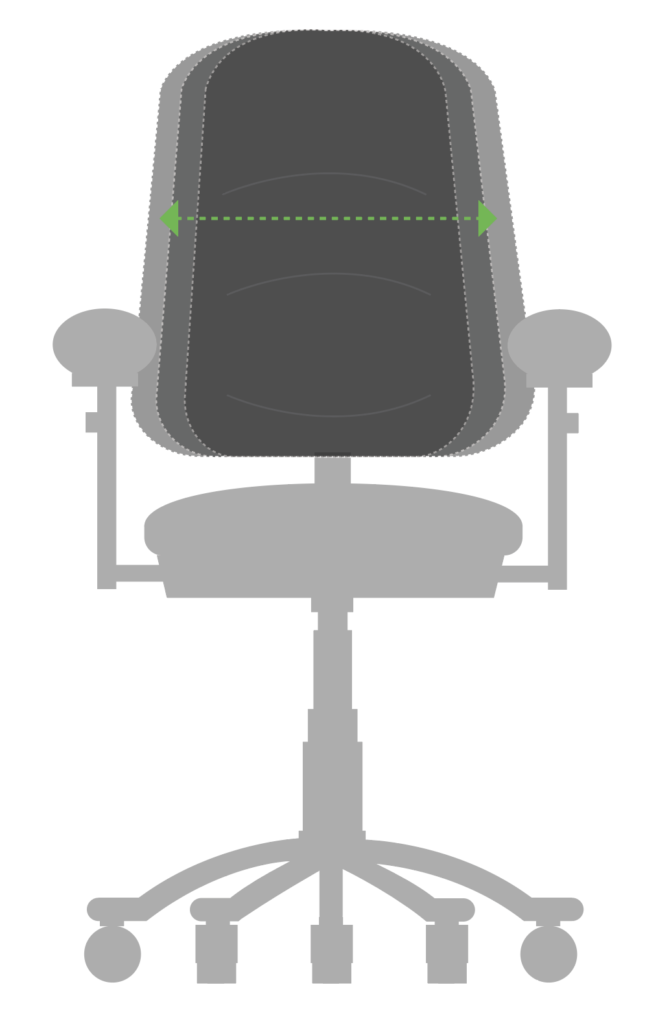
Backrest Angle
The backrest angle should:
• Be positioned 90 to 110 degrees depending on personal preference.
• Ensure the lumbar support is positioned in the curvature of the user’s lower back.
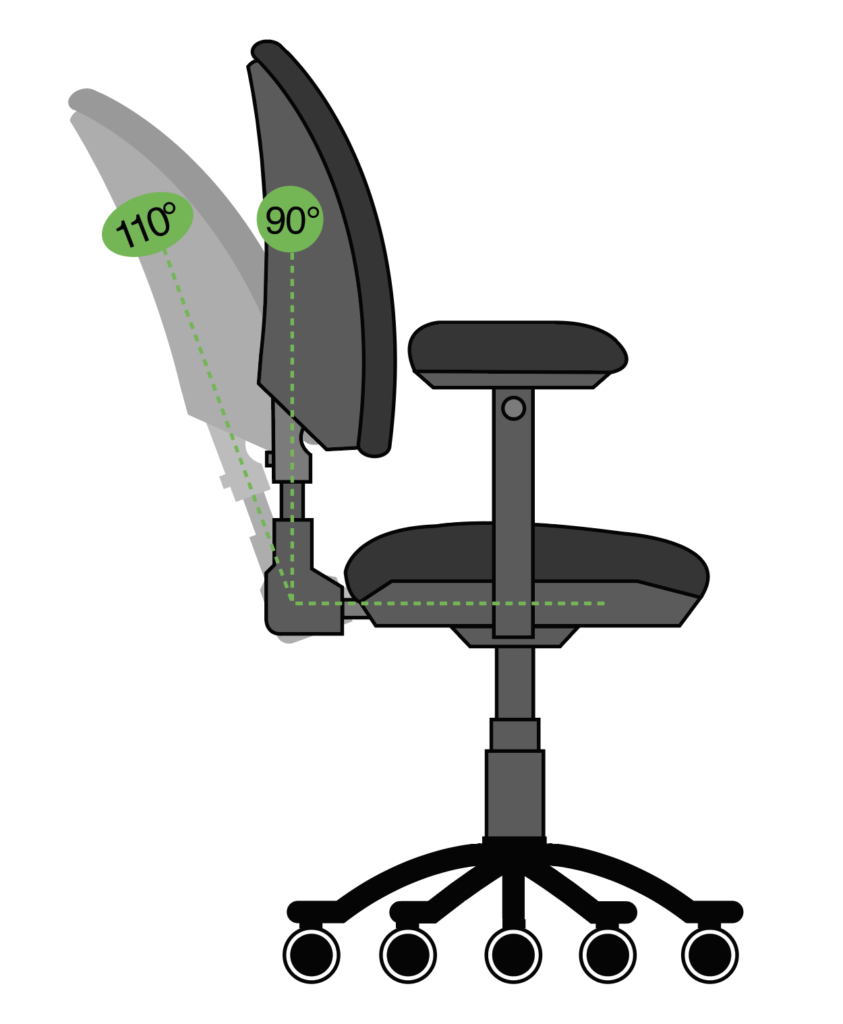
The armrests on a chair should:
• Support the arms.
• Allow access to the workstation.
• Distribute forces evenly.
• Allow the user to sit in a variety of postures.
Armrest Height
The armrest height should:
• Be adjustable and support the user’s forearms and/or elbows.
• Allow users to maintain neutral posture.
• Should not cause the user to elevate or drop the shoulders in order to rest the arms.

Armrest Length, Width, and Positioning
The length, width, and positioning of the armrests should:
• Allow users to maintain a neutral posture.
• Support the user’s forearms and not cause excess contact stress.
• Not impede the user’s ability to access the workstation.
• Allow for width adjustability.
• Pivot or rotate to allow chair to be positioned as close as possible to the workstation (shown below).
• Allow the user to enter and exit the chair easily.
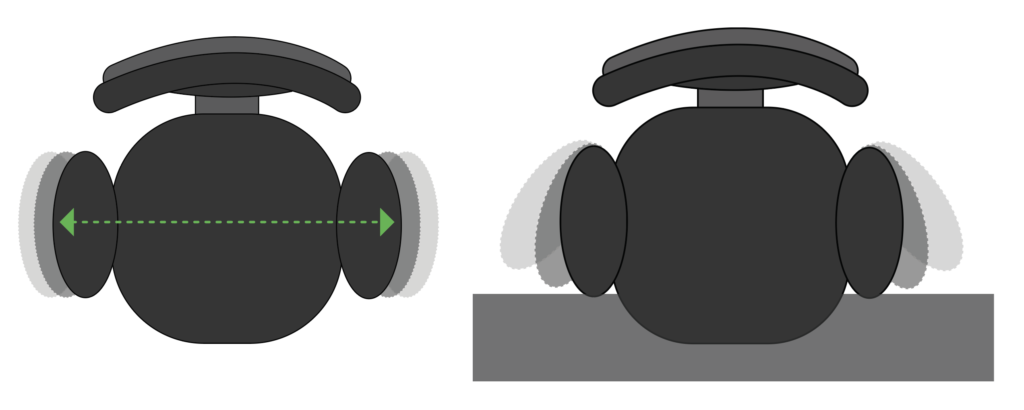
The casters on the chair should be appropriate to the type of flooring.
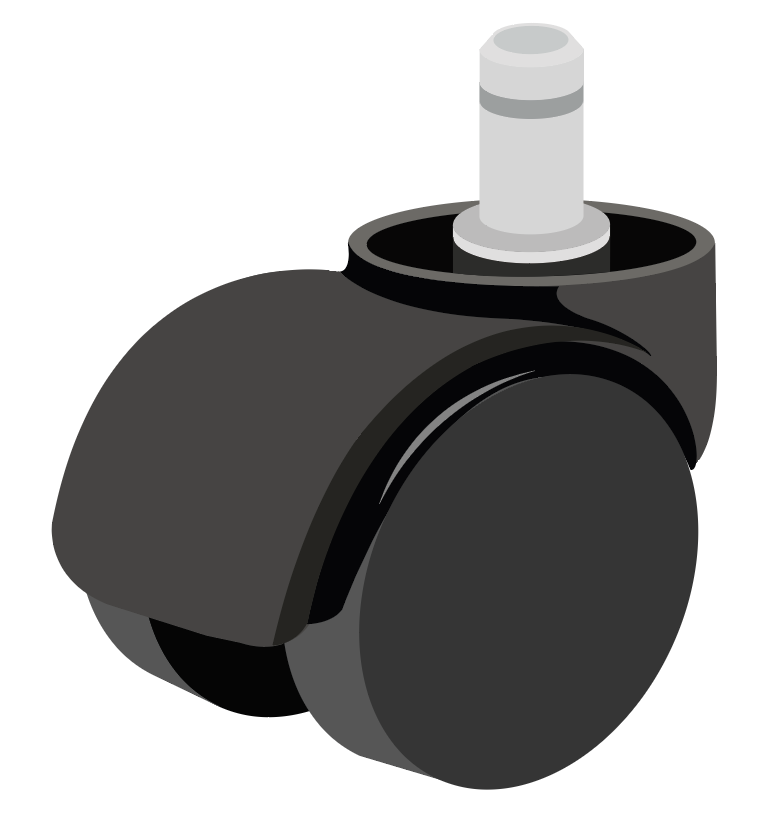
Hard Casters
• Lower rolling resistance
• Recommended for soft surfaces (carpeted floors)
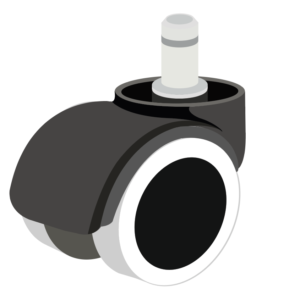
Soft Casters
• Higher rolling resistance
• Recommended for hard-surface floors (tile, laminate)
Important Considerations
![]()
Preventative maintenance (e.g. cleaning and lubricating) is suggested to ensure ease of operation.
